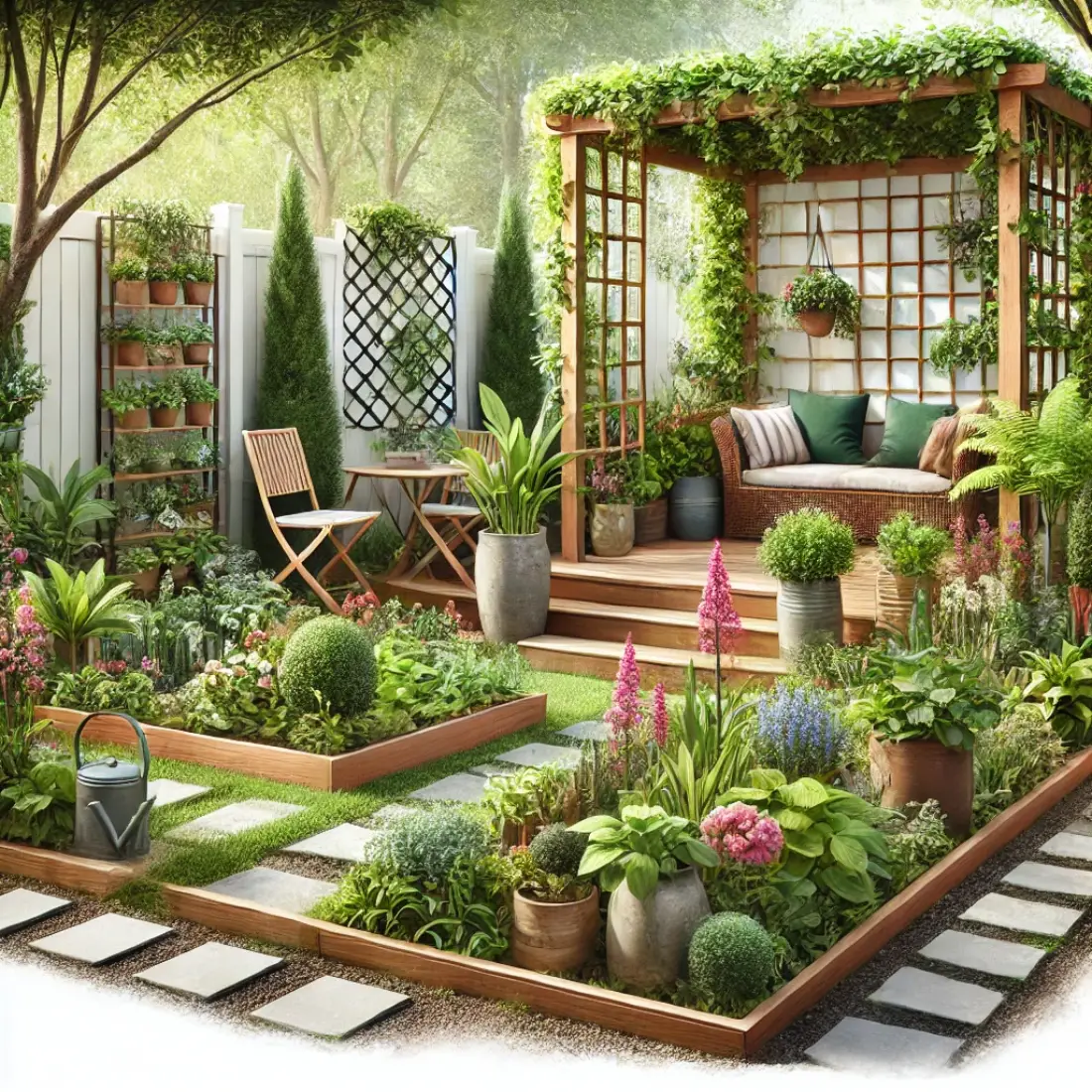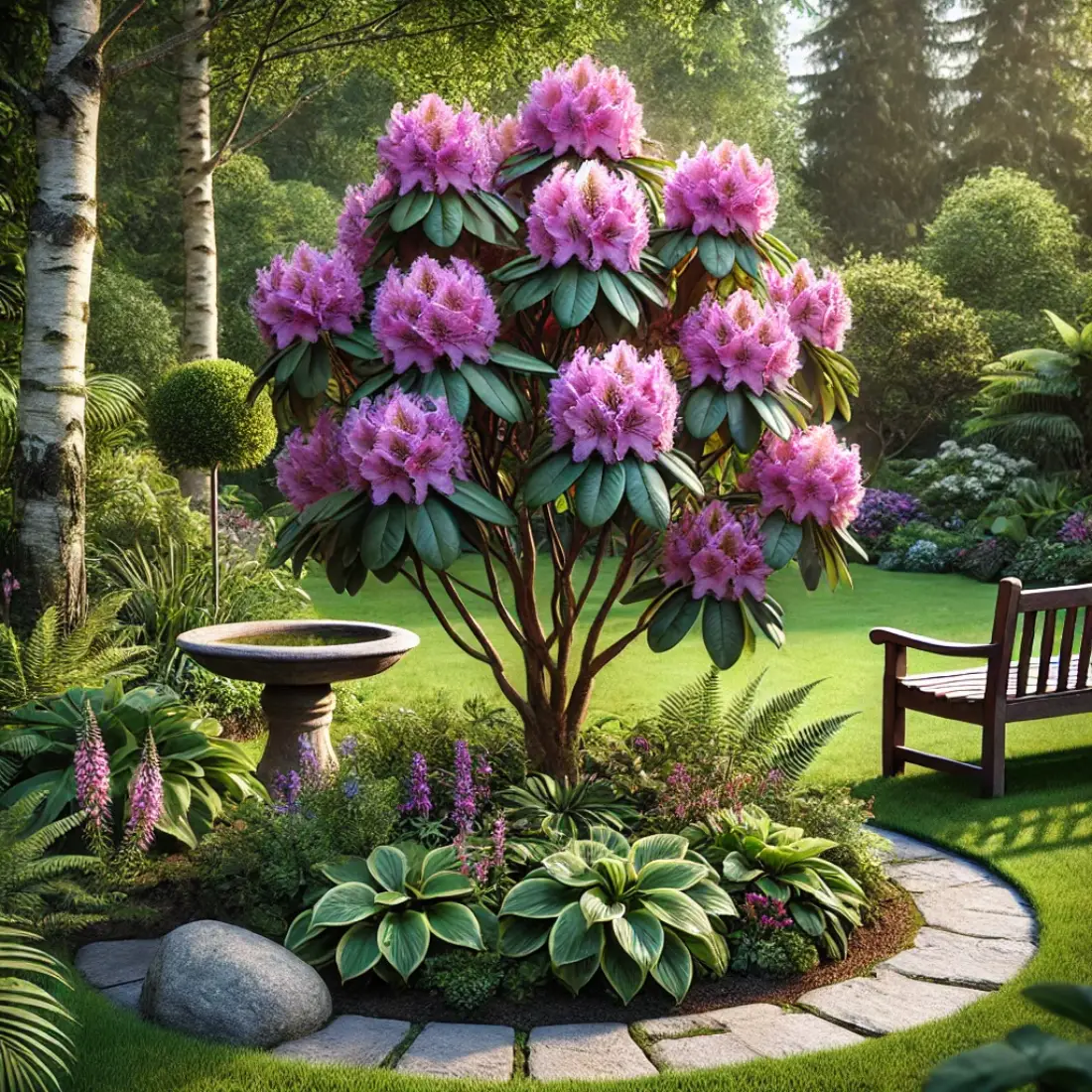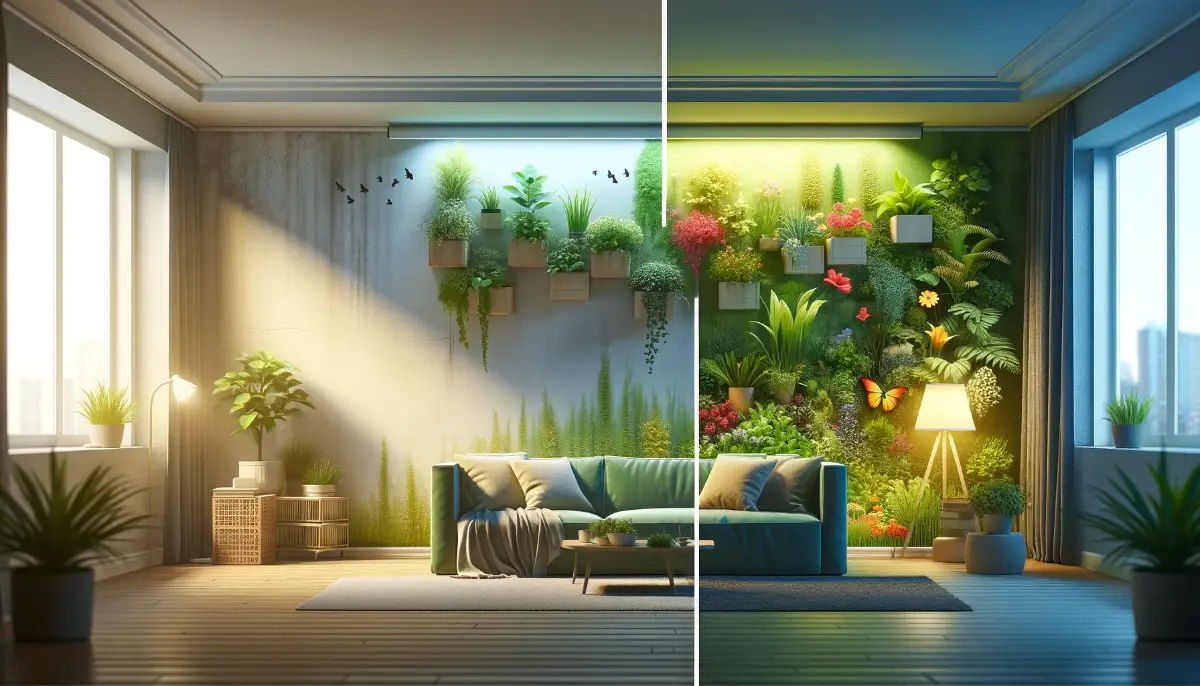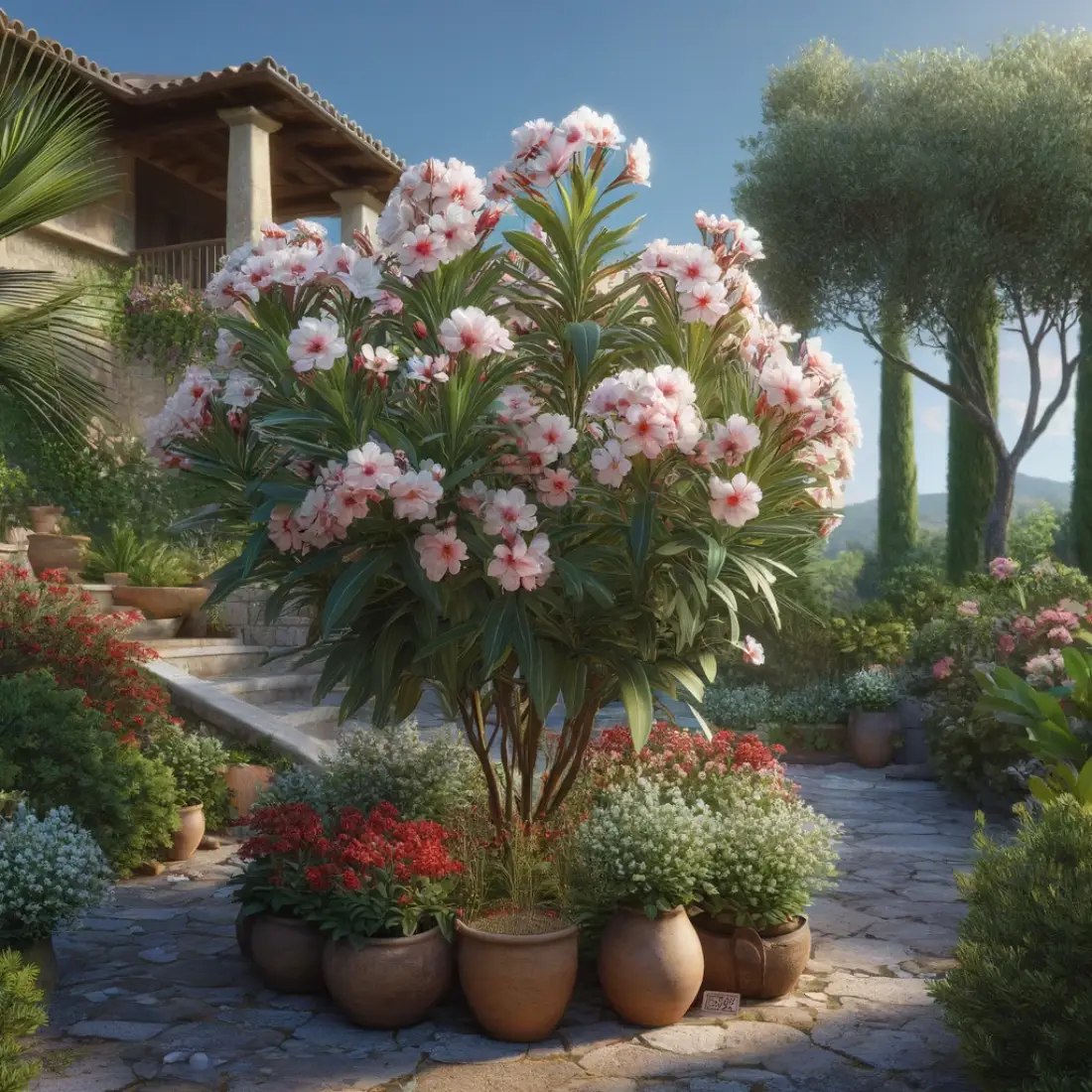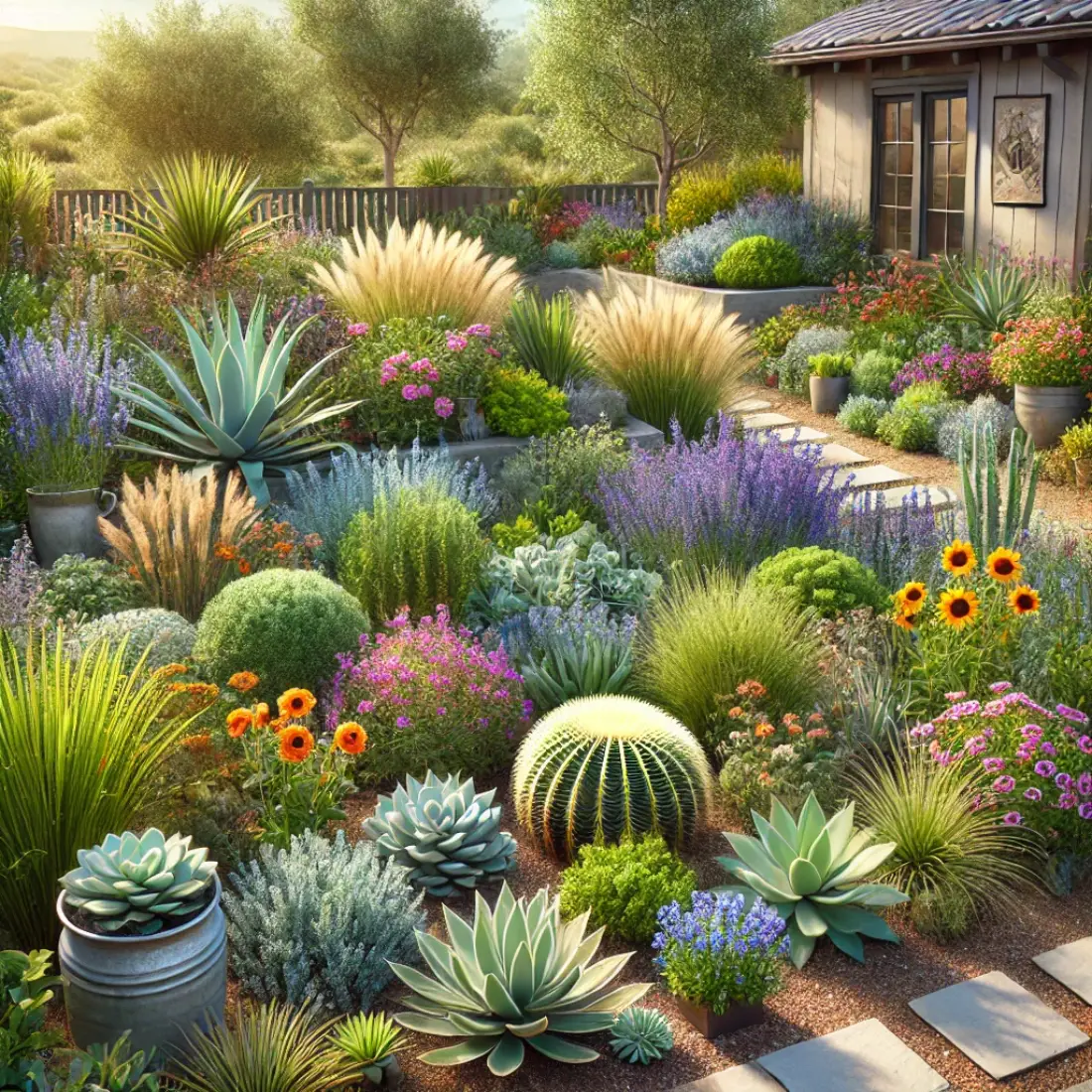Planning a small garden design can seem daunting, but with the right approach, you can transform any tiny space into a beautiful, functional garden. Whether you want to grow vegetables, flowers, or simply create a peaceful outdoor retreat, careful planning is key.
By assessing your space, selecting the right plants, and utilizing smart design techniques, you can maximize every inch of your garden.
- Planning is crucial for maximizing a small garden space.
- Choosing the right plants can enhance the visual appeal.
- Utilizing vertical space and smart layouts can make a small garden feel larger.
Assessing Your Space
Measuring Your Garden Area
The first step in planning a small garden design is to accurately measure your garden area. This helps you understand the exact dimensions you have to work with, which is crucial for layout and plant placement.
Use a measuring tape to measure the length and width of the space. Sketch your garden on graph paper, noting the measurements, and include any existing structures like patios, trees, or fences.
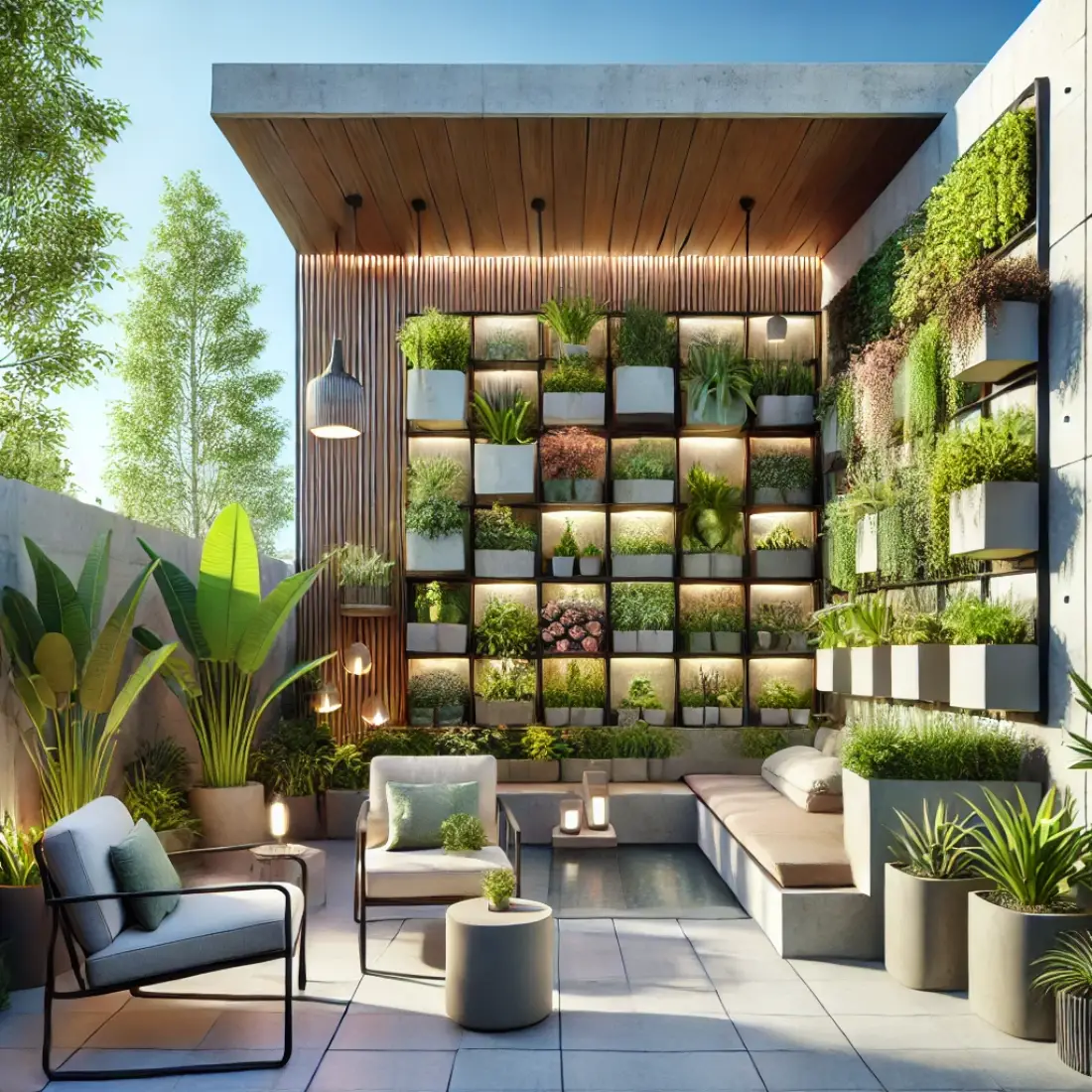
Observing Sunlight and Shade
Sunlight plays a vital role in plant growth, so observing the sunlight patterns in your garden is essential. Spend a day tracking where the sunlight falls and how it changes throughout the day. Note areas that receive full sun, partial shade, or full shade.
This information will guide your plant selection and placement, ensuring that each plant gets the right amount of light.
Soil Testing
Understanding your soil’s composition is another critical aspect of garden planning. Conduct a basic soil test to check its pH level and nutrient content. You can purchase a soil testing kit from a garden center or send a sample to a local extension service for analysis.
Based on the results, you can amend your soil with compost, fertilizers, or other organic matter to create an optimal growing environment for your plants.
Defining Your Garden’s Purpose
Types of Small Gardens
When planning a small garden design, it’s crucial to define its primary purpose. Are you looking to grow your own vegetables, create a colorful flower garden, or perhaps cultivate a herb garden for cooking? Each type of garden has different requirements and can influence your plant choices and layout.
Consider Your Lifestyle
Consider how much time you can dedicate to garden maintenance. A vegetable garden may require more frequent care and harvesting, while a flower or herb garden might need less upkeep. Think about your lifestyle and how much effort you can realistically invest in your garden.
Additionally, consider who will use the garden. Is it a space for children to play, or a peaceful retreat for relaxation? Defining these goals will help you make informed decisions throughout the design process.
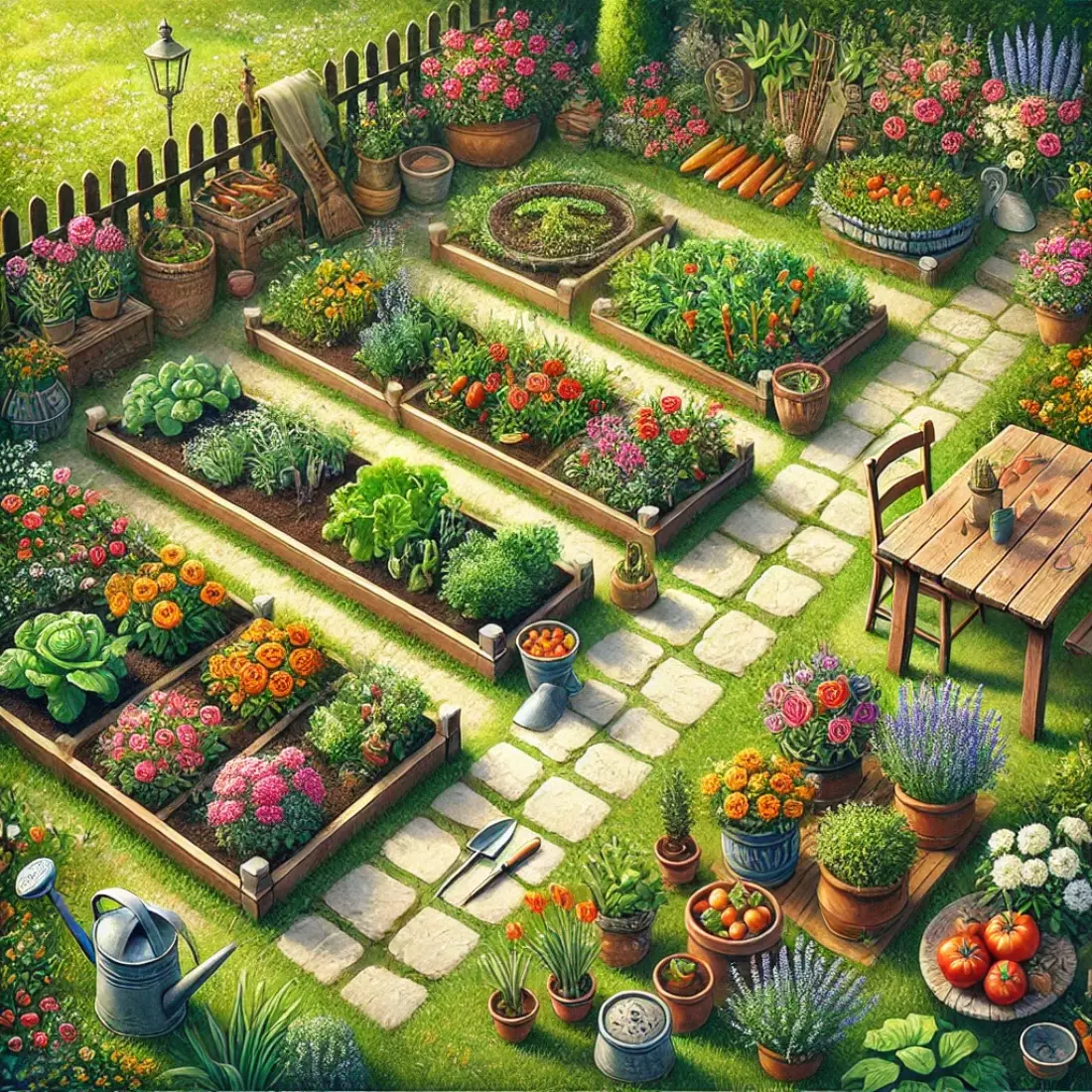
Choosing the Right Plants
Selecting Plants Based on Sunlight
Choosing the right plants for your small garden design starts with understanding the sunlight your garden receives. Plants have different light requirements:
- Full Sun Plants: These plants need at least six hours of direct sunlight daily. Examples include tomatoes, sunflowers, and lavender.
- Partial Shade Plants: These thrive with three to six hours of sunlight. Consider plants like ferns, hostas, and hydrangeas.
- Shade-Tolerant Plants: These grow well in areas with less than three hours of direct sunlight. Examples are impatiens, coleus, and fuchsias.
Opting for Multi-Functional Plants
Maximize your small garden by choosing multi-functional plants. These plants not only add beauty but also provide other benefits:
- Edible Plants: Herbs like basil, mint, and rosemary are attractive and useful in the kitchen. Vegetables such as cherry tomatoes and lettuce can also be visually appealing.
- Aesthetic and Practical Plants: Plants like marigolds can deter pests while adding color to your garden. Lavender is another great option, offering fragrance and attracting pollinators.
Native Plants vs. Exotic Plants
Deciding between native and exotic plants is another important step:
- Native Plants: These are well-adapted to your local climate and soil, requiring less maintenance. Examples include coneflowers, black-eyed Susans, and asters.
- Exotic Plants: While they can add unique beauty, exotic plants may need more care and could potentially become invasive. If you choose exotic plants, research their needs and potential impacts on your local ecosystem.
Considering Plant Size and Growth Habit
In a small garden, every inch counts. Choose plants that won’t outgrow your space:
- Dwarf Varieties: Opt for dwarf or compact varieties of larger plants to save space. For example, dwarf fruit trees and miniature roses.
- Vertical Growers: Plants that grow upward, like pole beans and climbing roses, utilize vertical space effectively.
By carefully selecting plants that match your garden’s sunlight, space, and purpose, you can create a thriving, visually appealing garden that meets your needs.
Designing the Layout
Creating Zones
In a small garden, creating distinct zones can help organize the space and make it feel larger. Divide your garden into functional zones such as seating areas, planting beds, and pathways. Consider visual zones by grouping plants with similar colors or textures to create focal points and guide the eye through the garden.
Vertical Gardening
Utilizing vertical space is a smart strategy for small garden design. Vertical gardening allows you to grow more plants without taking up valuable ground space. Use trellises, wall planters, and hanging baskets to add layers of greenery. Climbing plants like beans, peas, and ivy can transform walls and fences into lush, green surfaces.
Pathways and Access
Designing efficient pathways is essential for accessibility and aesthetics. Pathways help define different areas and make it easier to move around your garden. Use materials like gravel, stepping stones, or bricks to create durable and attractive paths. Ensure the paths are wide enough for comfortable walking and consider adding curves to make the space more dynamic.
Maximizing Space with Containers
Containers are perfect for small gardens as they are versatile and portable. Use pots, planters, and raised beds to grow a variety of plants. Arrange containers in groups to create mini-gardens or use them to fill in gaps. Choose containers of different heights and sizes to add depth and interest.

Incorporating Edges and Boundaries
Well-defined edges and boundaries can enhance the overall design of your garden. Use edging materials like bricks, stones, or metal to create clean lines and separate different zones. Low fences or hedges can provide privacy and a sense of enclosure, making the garden feel like a secluded retreat.
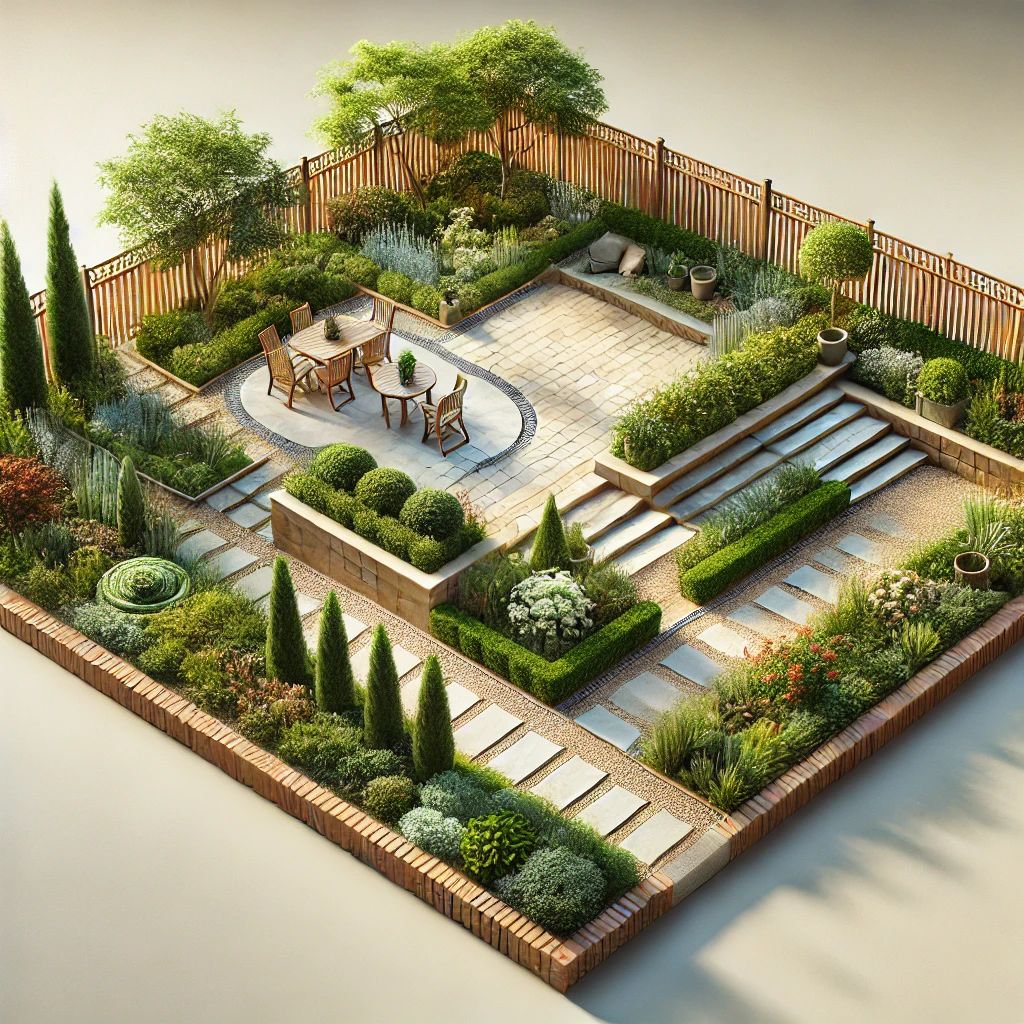
Using Reflective Surfaces
Reflective surfaces like mirrors or water features can create the illusion of more space. Position mirrors on walls or fences to reflect light and greenery, making the garden appear larger. Small water features can add a soothing element and enhance the garden’s ambiance.
By thoughtfully designing the layout, you can maximize the potential of your small garden, making it a functional and beautiful space.
Incorporating Structures and Features
Garden Furniture
Choosing the right garden furniture is essential for creating a comfortable and functional outdoor space. Opt for compact, multi-functional furniture that fits well in small areas. Folding chairs, stackable stools, and built-in benches are excellent choices. Furniture with storage capabilities, like benches with hidden compartments, can help keep your garden tidy and organized.
Water Features
Adding a water feature can enhance the tranquility and aesthetic appeal of your small garden. Consider installing a small fountain, birdbath, or pond. These features not only create a soothing sound but also attract birds and other wildlife, adding life to your garden. Ensure the water feature is proportionate to the size of your garden to maintain balance.
Lighting
Effective lighting can transform your garden, making it usable and inviting even after sunset. Solar-powered lights are an eco-friendly option that requires no wiring. Use string lights, lanterns, or LED spotlights to highlight pathways, plants, and seating areas. Consider placing lights at different heights to create depth and highlight key features.
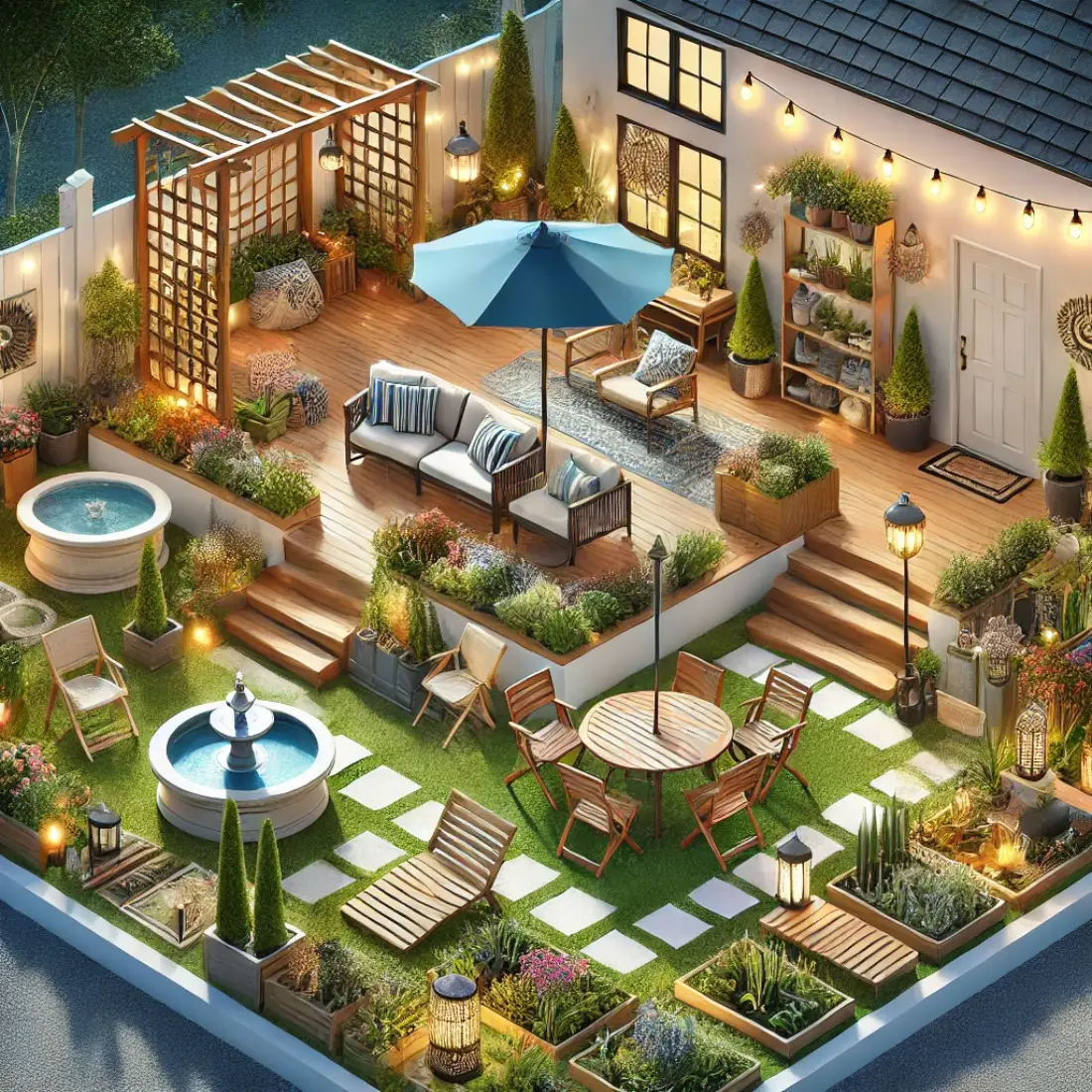
Pergolas and Arbors
Pergolas and arbors can add vertical interest and provide support for climbing plants. These structures create shaded areas that are perfect for relaxation or dining. Even in a small garden, a compact pergola or arbor can define spaces and add a touch of elegance. Choose materials like wood, metal, or vinyl based on your garden’s style and maintenance preferences.
Decorative Elements
Incorporate decorative elements like sculptures, bird feeders, or wind chimes to add personality to your garden. These features can serve as focal points and enhance the overall aesthetic. Be mindful of the scale and placement to avoid cluttering the space.
By thoughtfully incorporating these structures and features, you can enhance both the functionality and beauty of your small garden, creating a serene and inviting outdoor retreat.
Sustainable Gardening Practices
Water Conservation
Implementing water conservation techniques is essential for sustainable gardening. Drip irrigation systems are efficient, delivering water directly to the plant roots, minimizing evaporation.
Additionally, consider installing rain barrels to collect rainwater, which can be used to water your garden. Mulching is another effective method; it retains soil moisture, reduces the need for frequent watering, and helps control weeds.
Composting
Composting is a great way to recycle organic waste and enrich your garden soil. Start a compost bin with kitchen scraps like vegetable peelings, coffee grounds, and eggshells, along with garden waste such as leaves and grass clippings.
Composting reduces landfill waste and provides a rich, natural fertilizer for your plants. Regularly turning the compost helps speed up the decomposition process and ensures even nutrient distribution.
Pest Management
Adopting natural pest management practices keeps your garden healthy without harming the environment. Companion planting is an effective strategy where certain plants are grown together to repel pests or attract beneficial insects.
For example, marigolds can deter aphids, while attracting ladybugs that prey on pests. Neem oil and insecticidal soap are safe alternatives to chemical pesticides, effectively managing pests without damaging the ecosystem.
Soil Health
Maintaining healthy soil is key to sustainable gardening. Regularly adding organic matter, such as compost or well-rotted manure, improves soil structure and fertility. Practice crop rotation to prevent soil depletion and reduce pest buildup.
Cover crops, like clover or rye, can be planted in off-seasons to prevent soil erosion and add nutrients back into the soil.
Maintaining Your Small Garden
Regular Maintenance Tasks
Consistent maintenance is key to keeping your small garden healthy and beautiful. Establish a regular watering schedule based on your plants’ needs and the local climate. Early morning or late afternoon watering reduces evaporation and ensures plants get adequate hydration.
Regularly prune and deadhead your plants to promote growth and maintain a tidy appearance. Removing spent flowers encourages new blooms and keeps plants vigorous.
Seasonal Care
Seasonal care is crucial for adapting your garden to changing weather conditions. In spring, prepare your garden by cleaning up debris, checking for pests, and adding fresh compost or mulch. As summer approaches, ensure your plants are well-watered and provide shade for those that need it.
In autumn, remove fallen leaves, prune perennials, and plant bulbs for spring flowers. Winterize your garden by protecting delicate plants with mulch or frost covers and ensuring that pots and containers are insulated.
Fertilization and Soil Health
Regular fertilization is essential for maintaining soil fertility and plant health. Use organic fertilizers like compost, manure, or fish emulsion to provide essential nutrients. Conduct soil tests periodically to monitor nutrient levels and pH balance. Adjust fertilization practices based on the results to ensure your plants receive the right nutrients.
By adhering to a consistent maintenance routine and adjusting your care techniques seasonally, you can ensure your small garden remains vibrant and thriving year-round.
FAQs about a Small Garden Design
What are the best plants for small gardens?
The best plants for small gardens include compact varieties like dwarf fruit trees, herbs (basil, mint), and small flowering plants such as marigolds, petunias, and pansies. These plants take up minimal space and can thrive in containers or small beds.
How can I make my small garden look bigger?
To make a small garden look bigger, use techniques like vertical gardening, reflective surfaces (mirrors, water features), and creating defined zones. Choose plants of varying heights and use light colors to create an illusion of space.
What is the most low-maintenance garden design?
A low-maintenance garden design includes drought-tolerant plants, native species, and perennials. Incorporate mulch to reduce weeds and moisture loss, and use drip irrigation for efficient watering.
How do I start a garden on a budget?
Start a garden on a budget by using seeds instead of buying mature plants, repurposing containers, and composting kitchen scraps. Visit local plant swaps and look for sales at garden centers.
Can I grow vegetables in a small garden?
Yes, you can grow vegetables in a small garden. Choose compact or dwarf varieties and use vertical gardening techniques. Vegetables like cherry tomatoes, lettuce, radishes, and herbs are perfect for small spaces.
How do I deal with pests in a small garden?
Deal with pests by using natural pest control methods like companion planting, introducing beneficial insects (ladybugs, predatory wasps), and using organic insecticides like neem oil or insecticidal soap.
What tools do I need for a small garden?
Basic tools for a small garden include a trowel, pruners, a watering can or hose, gardening gloves, and a hand fork. These tools will help you with planting, pruning, and general maintenance.
How can I incorporate a seating area in my small garden?
Incorporate a seating area by using compact, foldable furniture or built-in benches with storage. Position the seating to maximize views and create a cozy, inviting space.
What are some good ideas for vertical gardening?
Good ideas for vertical gardening include using trellises, wall-mounted planters, hanging baskets, and vertical garden kits. Climbing plants like beans, peas, and ivy are ideal for vertical growth.
How often should I water my small garden?
The watering frequency depends on your plants and climate. Generally, small gardens need watering 2-3 times a week. Ensure the soil is moist but not waterlogged. Adjust watering during hot or dry periods.

